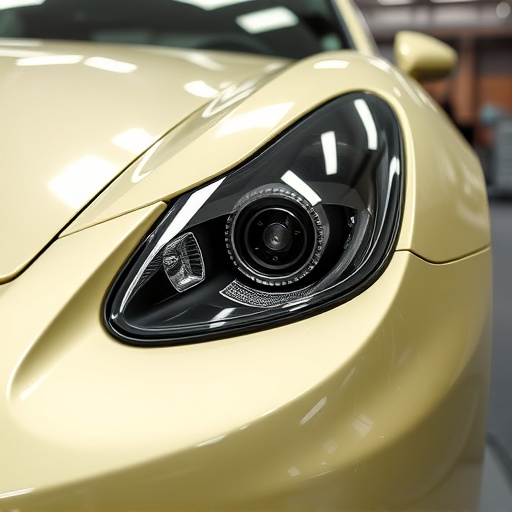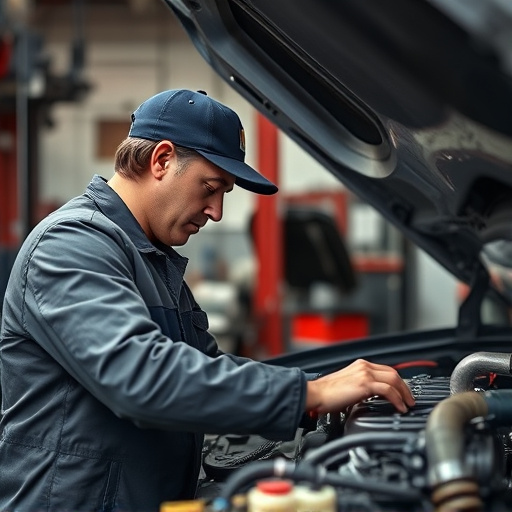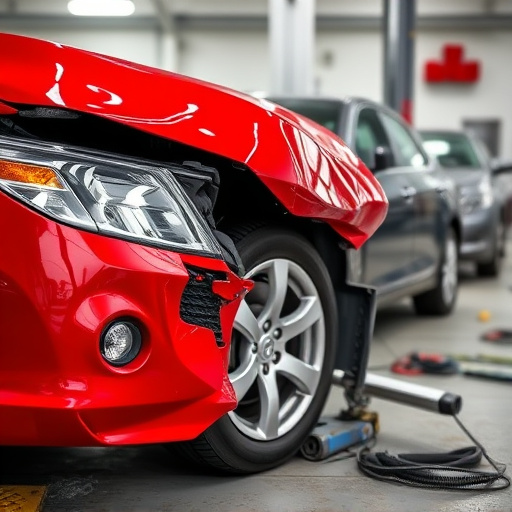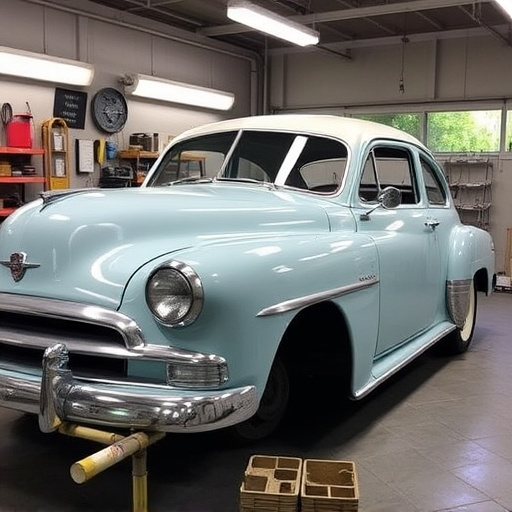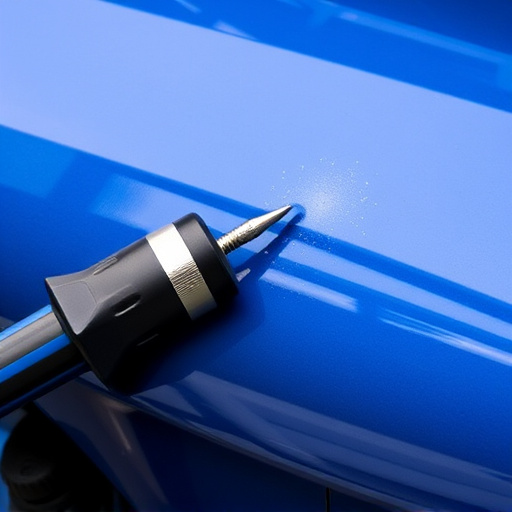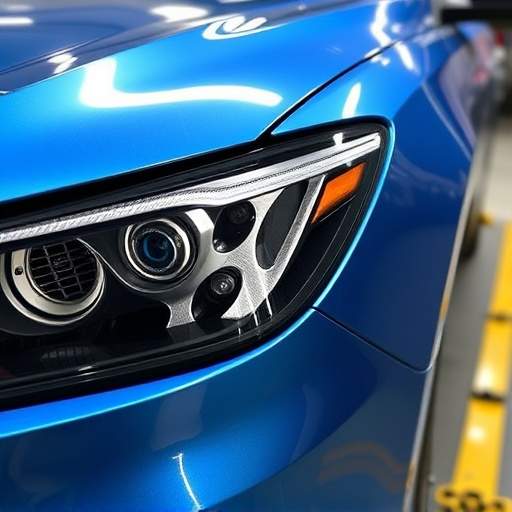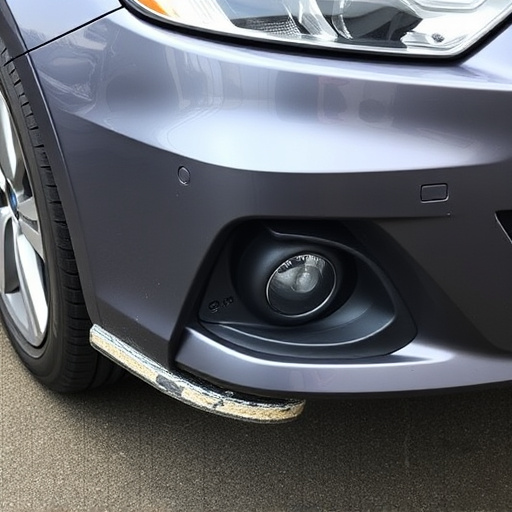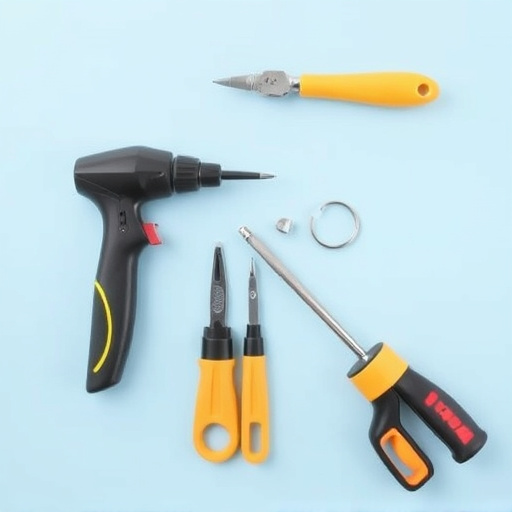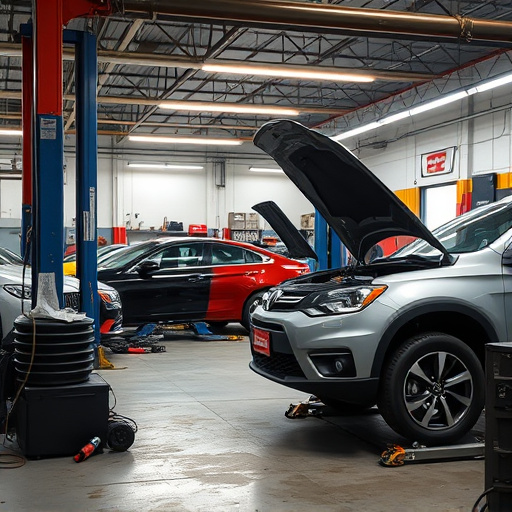Hail damage dents vary from cosmetic to structural issues, impacting vehicle safety and tire wear. Effective hail damage dent repair involves assessing dents' severity, using PPE for safety, and employing techniques like paintless dent repair (PDR) for minor dents or traditional methods with advanced technology for severe cases, aiming for seamless restoration to pre-damage condition.
Hail damage can leave behind a myriad of dents, from small, superficial marks to large, unsightly deformities on your vehicle’s exterior. This article delves into the world of hail damage dent repair, offering a comprehensive guide for both large and small dents. We explore the causes and types of these dents, provide essential safety measures before repair, and detail effective methods tailored to each size, ensuring your vehicle regains its original sleekness.
- Understanding Hail Damage Dents: Causes and Types
- Assessment and Safety Measures Before Repair
- Effective Methods for Large and Small Dents
Understanding Hail Damage Dents: Causes and Types

Hail damage dents can range from small, cosmetically annoying marks to significant, structural issues that affect a vehicle’s safety and performance. These dents are typically caused by hailstones, which can vary in size from tiny pellets to large, ice-like chunks. The impact of these objects on a car’s exterior can result in various types of dents, including deep, concave indentations known as “dents” or “pinged areas,” and shallower, rounded marks called “bounce marks.”
While some hail damage might be superficial, other impacts can cause significant internal changes to a vehicle’s frame. Over time, untreated dents can compromise the structural integrity of a car, leading to problems during driving, such as uneven tire wear or even safety hazards. Understanding these causes and types is crucial for effective hail damage dent repair, whether it involves simple fixes like auto maintenance or more complex procedures like automotive restoration.
Assessment and Safety Measures Before Repair

Before attempting any hail damage dent repair, whether for small or large dents, a thorough assessment is crucial to ensure safety and effectiveness. Inspect the affected area carefully to determine the extent of the damage. Look for cracks, breaks, or deep penetrations that might require specialized techniques like metal straightening or auto painting. The goal is to identify any hidden issues that could complicate the repair process.
Safety should always be a top priority. Wear appropriate personal protective equipment (PPE) including gloves and safety goggles to shield yourself from potential hazards. Additionally, ensure you work in a well-ventilated area, especially if using chemical compounds like car body shop products or paint. Proper ventilation helps prevent the buildup of harmful fumes, making the repair process safer and more comfortable for both you and your vehicle.
Effective Methods for Large and Small Dents

When it comes to effective hail damage dent repair for both large and small dents, there are several proven methods that body shop professionals employ. For smaller dents, one popular technique is the use of paintless dent repair (PDR) techniques. PDR involves specialized tools and expertise to gently press out the dent from the inside without affecting the surrounding paintwork. This method not only preserves the original factory finish but also provides a cost-effective solution for minor dings and dents.
For larger, more severe dents, traditional dent repair methods are often necessary. These involve removal of the damaged panel, precise cutting and shaping to remove the dented area, and careful restoration using body shop services expertise. Fleet repair services and autobody repairs often utilize advanced technology such as robotic welders and computer-aided design (CAD) software to ensure accurate results. The ultimate goal is to restore vehicles to their pre-damaged condition, ensuring a seamless finish that matches the vehicle’s original specifications.
Hail damage dent repair is a crucial process that can restore vehicles to their pre-hail condition. By understanding the different types of dents and implementing safe assessment practices, car owners can effectively choose between various repair methods for both large and small dents. Whether it’s using specialized tools for minor dents or employing more extensive restoration techniques for significant damage, timely action and the right approach can ensure a seamless and lasting hail damage dent repair.


